It feels a bit odd calling my trip to Ravenna a pilgrimage, an antiquated word that implies superstition or the Middle Ages. I’m a Christian, but I’m also living in the 21st century.
Planning for this Ravenna trip (excursion? outing? jaunt?) began on the second to last night of our Italy trip. It was such a last minute change to our itinerary and a change made with such conviction (along with some lack of consideration to my girlfriend) that the trip didn’t really make much sense.
It was only when viewing the trip on Google Maps and counting out the five train station transfers that would need to happen throughout the day that I reluctantly admitted to myself that the trip made absolutely no sense unless in the context of a pilgrimage.
To say Ravenna is known for its pretty church mosaics would be like saying that the Grand Canyon is known for its river. Even when one sets aside the spiritual dimension, Ravenna is an underrated city from a historian’s perspective.
Under the Emperor Justinian, the Byzantine Empire was able to reconquer much of Western Europe, which caused him to make Ravenna the western seat of his newly unified Roman empire. For a couple hundred years thereafter, Ravenna was the most important city in Western Europe - the new Rome.
The Greek resurgence under Justinian takes up maybe half a page in a high school history book, largely because the primary legacy of a Greek, Byzantine Italy was in its failure. Yet, the implications of this failure were enormous.
The schism of 1054 was a direct result of the Greeks being unable to impose their will on the Western Church based in Rome. The dominance of Latin in western Churches and the complete absence of mosaic art in the West are also the result of the Greek decline in Italy. Even the successful encroachments of invaders from the East - Mongols, Arabs, Tatars - could be attributed to the growing divide between Greeks and Latins.
And this all brings me back to the spiritual dimension of this trip. To me, Ravenna and its churches are a glimpse into one of my favorite periods in Christianity. By that point, the faith was prominent enough so that its followers weren’t being fed to lions in the Coliseum amidst a cheering crowd.
And at the same time, the Church back then wasn’t yet wealthy enough to suffer from its excesses - indulgences, corruption, and politics. Rather, asceticism was still a powerful cultural force in the Church then, as exemplified by the desert fathers who spent most of their lives in prayer and meditation in remote monasteries.
Later on in the Medieval ages, any semblance of this asceticism is hard to find in European art. One gets the sense that the artist’s primary consideration is to represent reality. Think of Caravaggio’s use of shadows to accentuate Biblical scenes. Or, the gruesome, detailed depictions of Jesus’ suffering and death on the cross.
Western medieval art, while stunning in its realism, emphasizes details at the expense of the overarching narrative.
Here’s a photo I took of the panels at the Basilica di San Vitale, which communicates a sweeping narrative that links sacrifices made in the Old Testament - Abel’s lamb, Abraham’s attempted sacrifice of Isaac, Melchizedech’s offering - to the ultimate sacrifice made in the New Testament.
In Ravenna, the Christ depicted in the mosaics is quite different from the suffering Christ often shown in Western Art.
To me, this version of Christ - confident, smiling, ethereal - is most consistent with the primary message of the New Testament.
He is risen.

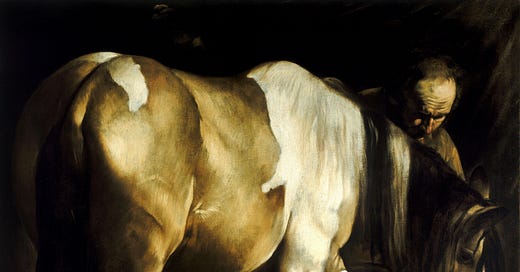



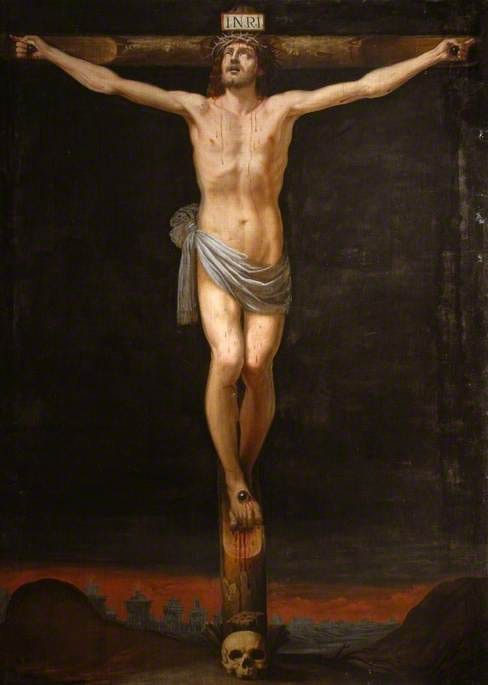
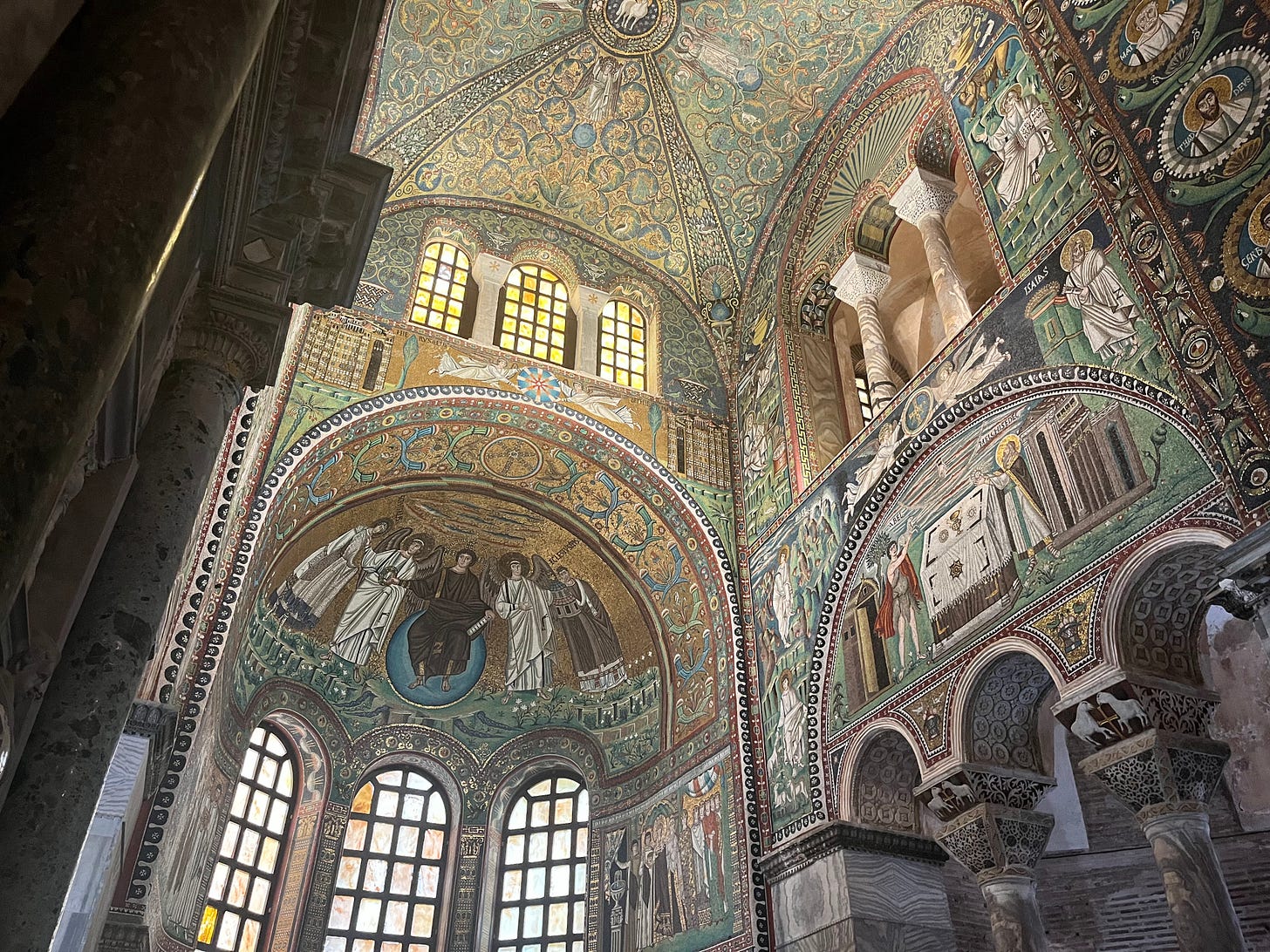
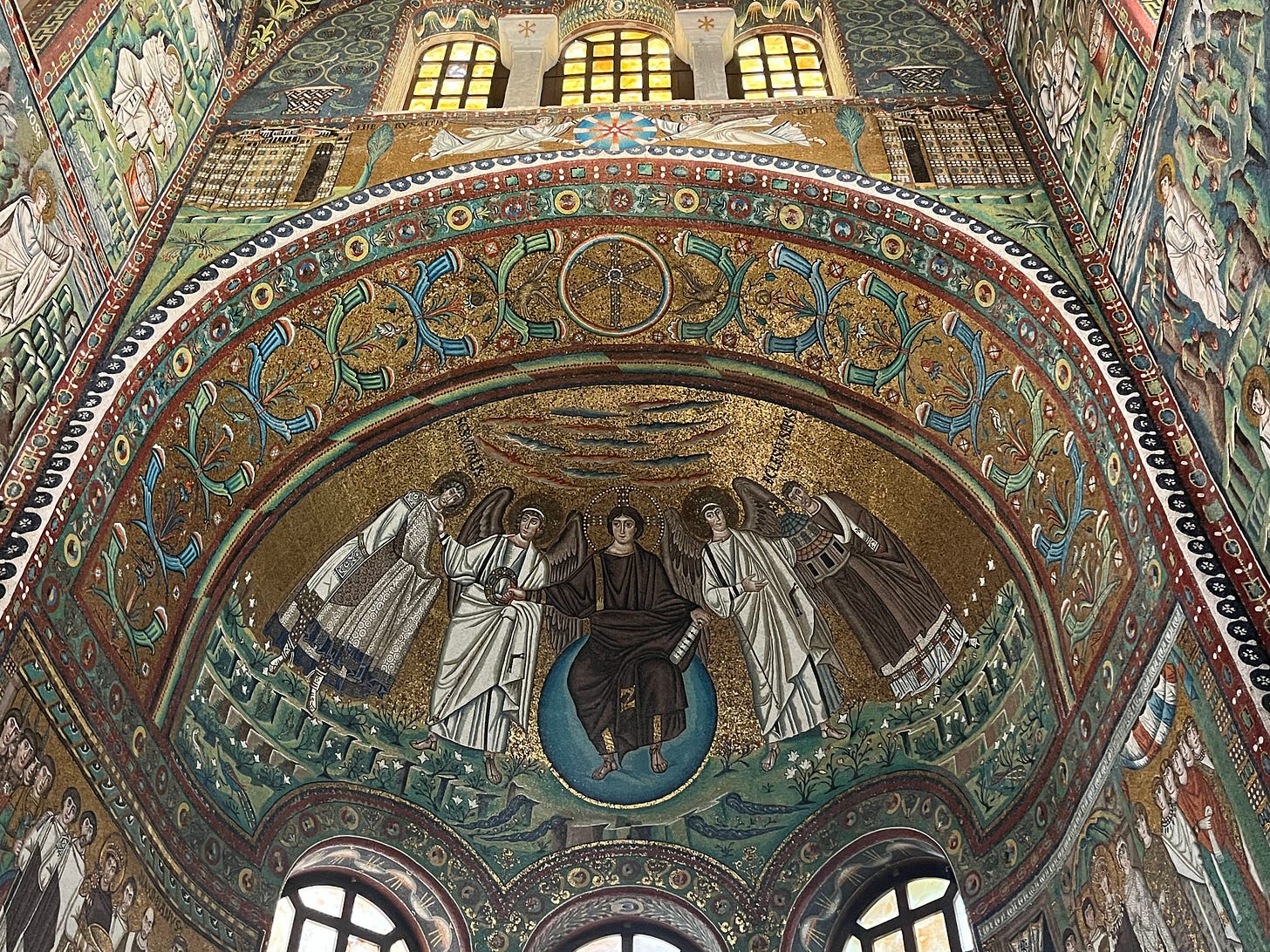
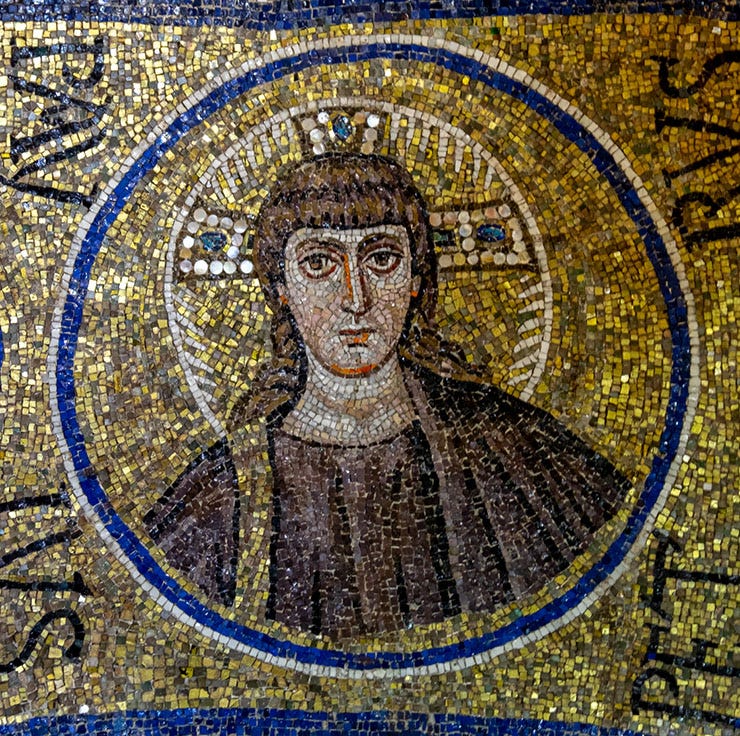
I saw an exhibit of Byzantine religious art at the Met in NYC, and one thing that stood out was that the crucifixion was relatively less important. There were lots of scenes of Christ's life, but they'd end with a small scene, not a larger emphatic image of Jesus on the cross. My friend suggested the Eastern Christianity was triumphant while Christianity in the west was beleaguered.
A read a book on Ravenna rather recently, and the story was fascinating. Pagan Rome still existed while Byzantine and Gothic kingdoms jostled for roles in the Christian world. If nothing else, Galla Placida's daughter writing mash notes to Atilla the Hun was hilarious. I doubt I'll ever get the Ravenna, but as it soon became a backwater, it has some magnificent art well preserved.
A pleasant reflection on Ravenna. Those who have not been may enjoy the panoramic scenes in the amuz app (iOS and apple silicon macs)
https://apps.apple.com/us/app/amuz/id1071762063